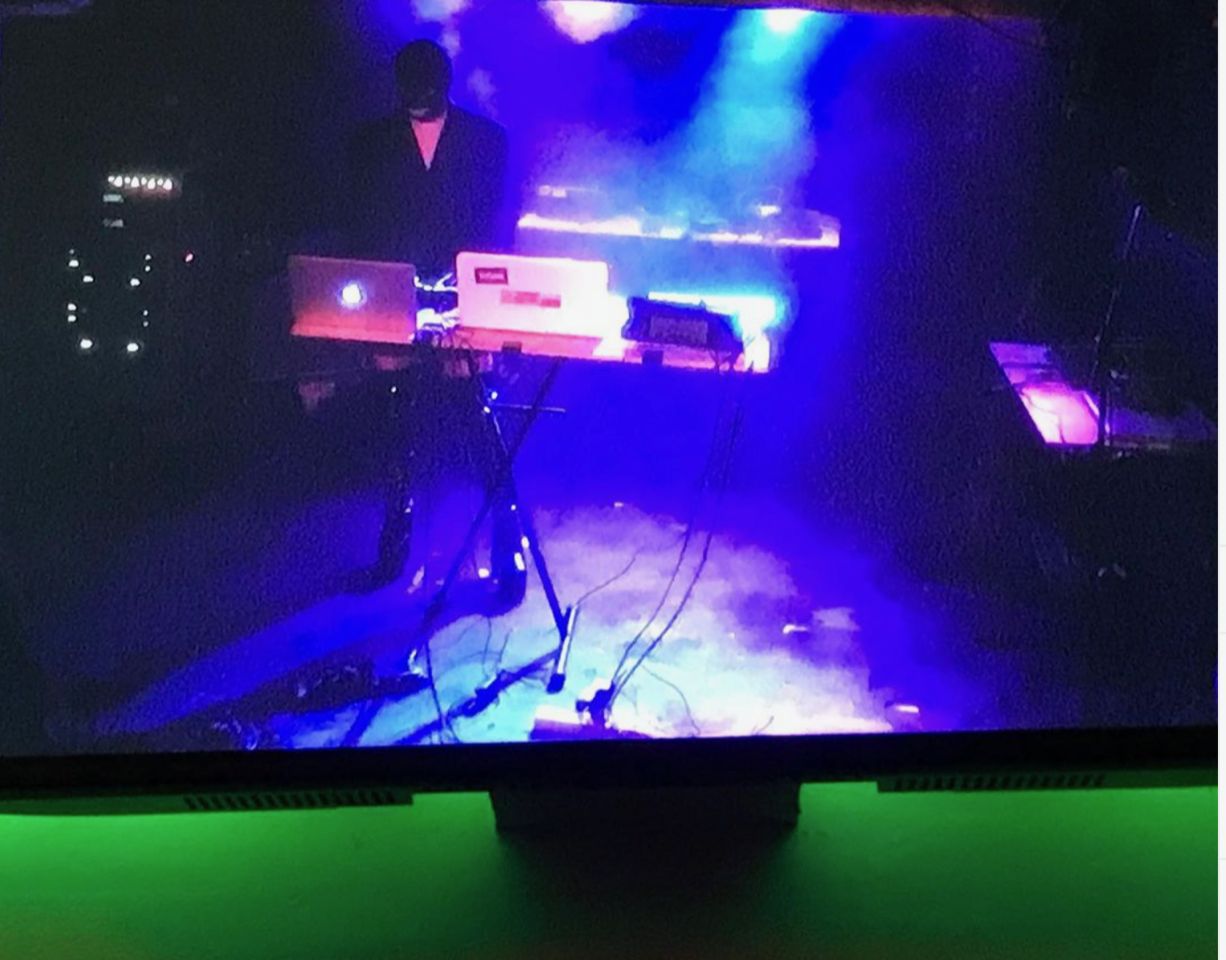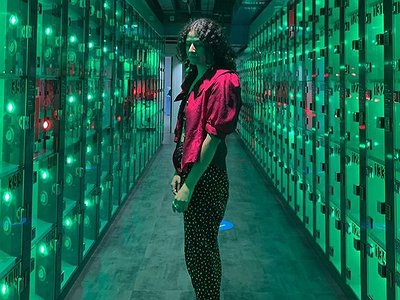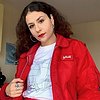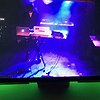Part 1
Name: Sainte Marina aka Marina Mardas
Nationality: Lebanese
Occupation: Transdiscipinary artist working with installations, sound, video and performance
Recommendations: I would recommend a short story as well as an album. First, «The Tell-Tale heart», a short story by Edgar Allan Poe. I discovered it at 15 years old, whilst studying English literature and it truly moved me. The first paragraph of the story is one of my favorite pieces of writing, I will not reveal what is it all about. I used it as the opening of my last podcast for Tikka and I was very happy to include such an influence.
The second one is the last album of Fatima Al Quadiri «Medieval Femme», paying tribute to the poetry of Arab women in the medical period. Using myself a lot of arabic in what I do, I felt really moved and connected to this album.
If you enjoyed this interview with Sainte Marina, visit her official website for more information. She is also on Instagram and has a Soundcloud account for her music work.
When did you start writing/producing music - and what or who were your early passions and influences? What was it about music and/or sound that drew you to it?
I bought my first machine and synth in 2014, back then I wanted to explore the possibilities of producing music and navigate into this field. I can say music has always been my companion in life, it is what kept me sane in a way.
I started digging with mainly punk and post-punk, metal and rock’n’roll music when I was around 10 or so. I was fascinated by the power these eras held and how political they were. I loved the link between these types of music and the ideologies and vision of the world that came with them.
I developed my music tastes by myself with the resources that were there. My parents would barely play music, and if they were, occasionally, it would be Arabic traditional music from the XXth century.
I always felt a strong connection between sounds (vibrations) and emotions, but also sounds and textures, colors and words. It is a world of synesthesia that goes beyond our own language. I always thought that sound was the most precise description of some emotional states or a memories (imagined-dreamed or lived). Paradoxically, since we can’t describe it, it is to me the ultimate freedom to project yourself and experience it in your own personal way.
How would you describe your own development as an artist and the transition towards your own voice?
I am an independent and self-taught artist. I was always drawn to art and creation in general but didn’t quite get how we were supposed to get on this path, although I was keen on creating many things by myself since I was a child. I didn’t want to go to an art school, so I did the studies that were the most interesting to me at the time, a BA and a MRes in Sociology.
It is only in my masters years that I started doing art again and developing my own universe and style through my first art studio. Then I started putting myself out in the world although I didn’t have any contacts in this field. It was something very interesting to learn because nobody tells you that being an artist involves a lot of mundane events, administrative tasks and networking. It really made me learn how to present myself properly as an artist but also exchange about what I do with other people to evolve. This is where the emulation came for me. It is really through the spectator that I could also make my work progress and I think this emulation is a great key to evolve as an artist.
I used several media from the beginning and thought of myself as a transdisciplinary artist because research was a always a huge part of my work. The diversity of media allowed me to express my own voice and originality in different ways which brought me to doing sound.
First, I was only producing music for my video works and installations. Then, with a project called Estienne, I decide to do a live performance dressed as my character. The idea was to give the inner soundscape of this character, as to present them in a more emotional way.
How do you feel your sense of identity influences your creativity?
Identity is a lifetime quest. It is something we learn to apprehend through experiences and I believe through all of the emotions it brings into yourselves. All of that composes my identity as a human being and that is what drives my creativity. It’s an everlasting patchwork that keeps evolving.
What were your main creative challenges in the beginning and how have they changed over time?
At first, it was very hard to just do one single thing. I always wanted to go in several directions. I was very challenging to make complete and coherent projects. Over time, I learned how to express my ideas in a more structured way and to have a clear presentation of the feelings/thoughts I wanted to put into the work.
I believe it is only through practice and a lot of work that I managed to do so over time. It is something I keep on learning about through new projects. The creative part was never a problem since I have a lot of ideas all the time. I try to do my best to put them out in reality.
As creative goals and technical abilities change, so does the need for different tools of expression, be it instruments, software tools or recording equipment. Can you describe this path for you, starting from your first studio/first instrument? What motivated some of the choices you made in terms of instruments/tools/equipment over the years?
I started in 2014 by buying a first price Yamaha keypad/synth with a Maschine MikroMK2 from Native. As I did a bit of piano when I was a child, I knew how to play the synth and create melodies. I stayed a long time with only that to learn, and software like Maschine or Ableton.
It is only when I started doing podcasts that I bought turntables and a new keyboard. My choices are very minimalistic, I want to use what I have to the maximum before getting some new machines.
Have there been technologies or instruments which have profoundly changed or even questioned the way you make music?
I don’t own a lot of instruments and machines but I try to select them carefully so that they match my way of working.
I would say that using microphones to add voices and recordings such as samples really added another perspective to my work and allowed me to push my ideas further. It also made me realize that I can use my writings in my productions and I love that idea. It makes it even more personal and allows me to include other aspects of my work as an artist. It is something I’m willing to dig into more over the next years.
Collaborations can take on many forms. What role do they play in your approach and what are your preferred ways of engaging with other creatives through, for example, file sharing, jamming or just talking about ideas?
I have never collaborated with anyone so far when it comes to my work. Usually, all of my close friends - who are like my family - will share their ideas, interests and projects with me and we will reflect on that. I try to do the same with the work I produce and get feedback from them. It’s really about sharing thoughts and experiences.
Take us through a day in your life, from a possible morning routine through to your work, please. Do you have a fixed schedule? How do music and other aspects of your life feed back into each other - do you separate them or instead try to make them blend seamlessly?
I usually have very packed weeks. I divide my week between my work as a freelancer in communications and my artist career.
For the artistic part I go to my studio to work on my projects. As I don’t only do music - but also installations, videos & writing - I usually try to work towards the deadlines I have to produce the work. I try to stick to my schedule as much as possible as I can't dedicate all of my time for that. It’s a lot of organization and it took me year to both find my own pace and be more efficient.
When it comes to music, I usually do it from home because I have all my machines there. I mostly do it in the evening or during the weekend when I can have a proper time alone and am far from the daily fast-pace of life. I work in small sessions that are usually very intense. I will always take a few days or a week to forget what I did and listen to it with fresh ears to perfect it. It’s a very unwinding activity for me and it really nourishes the other aspects of my life, so I try to make everything live together as much as I can. It brings a lot of balance in my life as it is always a moment to feel present and dive into myself.
Can you talk about a breakthrough work, event or performance in your career? Why does it feel special to you? When, why and how did you start working on it, what were some of the motivations and ideas behind it?
It was when I did a live performance called «Estienne», linked to an art project that was ongoing. I created a persona and made it appear through photographing different people that matched the whole concept. Then I decided it was time to embody it through a live performance where I would play a live set to present the inner thoughts and emotional state of this character.
The first time I did it was very mesmerizing to me because it was in a very small gallery in Paris, for the aftershow of a Danish designer. I was in the crowd and there was no separation, just my table. While I was playing, people would come to me and touch me. As it was also an art performance I had to play my character which was very robot-like so it was hard not to move a lot. I loved the intensity of sensing all these people’s energy around me. I remember being very nervous at first and getting a sense of liberation and confidence as I was unfolding the whole performance. It really changed something in myself and that’s also when I realized I loved playing live and not only producing at home for art projects.

The whole idea was to push the character further than images could do. This is why I wanted to add the sound part, but also to confront people to this persona in real life. It was a inner stream of sounds and vibration that was very emotional and it contained a lot of volatile information. I felt like it was a 20 minutes into the abyss of Estienne’s mind. The lack of words made me go further into the intensity of the soundscapes. I felt that it really moved people, whether it was their «style» of music or not.
I received very good feedback after that and was invited to do it 4 more times, in very different places such as openings for art fairs, parties or even art spaces. It allowed me to experience the same performance in various spaces with different crowds. And I really enjoyed the whole process. This is how I started doing music.







